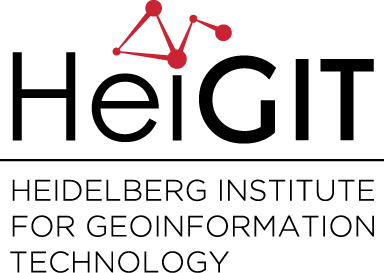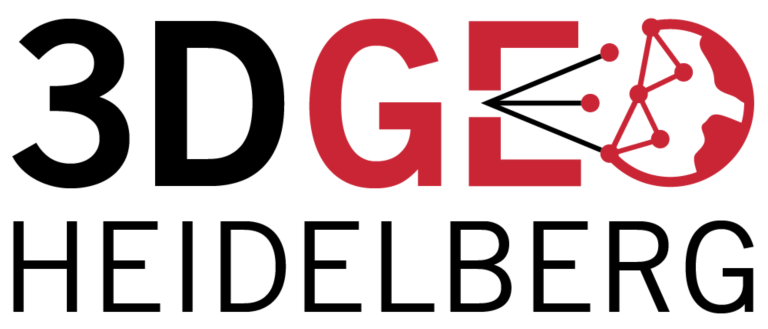Tag: Lidar
-
GIScience 4 Cultural Heritage
The GIScience Research Group @ Heidelberg University recently joined the Heidelberg Center for Cultural Heritage HCCH. The HCCH is bundling the existing competencies at Heidelberg University in basic research on cultural legacies of past and present societies . The application of results of disciplinary and interdisciplinary basic research on the analysis, documentation, development, maintenance, museum…
-
Successful field trips of the laser scanning course
This summer semester’s laser scanning course comprises a series of field trips done by small student groups of maximum two persons. Campaign planning and hands-on laser scanning in the field were conducted by the students and supervised by professor Bernhard Höfle, tutor Jörn profe, Kristina König, and Martin Hämmerle. Intensive learning for each single participant…
-
GIScience Heidelberg @ Santiago de Chile
The Heidelberg Center for Latin America (HCLA) in Santiago de Chile offers a Master of Science in Governance of Risk and Resources. This cooperative venture between the Geography institutes of Heidelberg University, the Universidad Catolica de Chile and the Universidad de Chile focuses on the (political and economic) controllability of problem-driven interaction between humans and…
-
LVISA release: plotting out of the map
The LIDAR Research Group (LRG) present a new release of LVISA: plotting out of the map. Besides the 3D presentation of a selected tree, plots with respect to feature statistic as well as the comparison to corresponding tree species, family and class are now also available. Who has not heard of LVISA: LVISA is a…
-
Laser scanning campaign at UNESCO World Heritage Site Lorsch Abbey
On Wednesday, 19th of March, the Kings Hall (Torhalle) facades at UNESCO World Heritage Site Lorsch Abbey were captured in 3D with a terrestrial laser scanner Riegl VZ-400 (provided by the Chair of GIScience) by Martin Hämmerle (LiDAR Research Group). The produced data set consists of about 65 million laser points and will allow for…
-
New Release of LVISA – Exploring 3D Point Clouds of Trees in the Web
The LIDAR Research Group (LRG) released LVISA – a novel system for analyzing point clouds of vegetation. This system examplifies a web-based laser scanning database for the management and analysis of tree reference signatures. It combines techniques and methods of LiDAR and 3D GIScience. We present a new release of LVISA including re-designed and re-implemented…
-
New video online: 3D solar potential assessment for renewable energy supply
Watch the video: http://youtu.be/TaCUaG5XEas We use methods like laser scanning and GIS in combination with computer science to simulate the sun’s path and the respective shadows that are cast by 3D objects. Thereby, we can assess the solar potential for certain areas and surfaces. Solar potential assessments can play a crucial role in studies that…
-
Fusion of human and remote sensor data in urban environments
OpenStreetMap (OSM) currently represents the most popular project of Volunteered Geographic Information (VGI): geodata are collected by common people and made available for public use. Airborne Laser Scanning (ALS) enables the acquisition of high-resolution digital elevation models that are used for many applications. Our new study combines the advantages of both ALS and OSM, offering…
-
Digital Earth Science Forum “Digital Earth Innovations” at the University of Osnabrueck starts European cooperation
The International Digital Earth Science Forum organized by Institute for Geoinformatics and Remote Sensing (IGF), the Youth Commission of the International Society for Digital Earth (ISDE) and the Association for the Promotion of Geoinformatics in Nothern Germany (GiN e.V.) took place on 4th of December 2013 at the University of Osnabrueck inside the botanical garden.…
-
LiDAR Research Group @ ISPRS Laser Scanning Workshop 2013
The LiDAR Research Group participates the Laser Scanning 2013 Workshop on Nov, 11-14th in Antalya, Turkey. The workshop brought together experts from different disciplines which are focused on the modeling and application of point cloud data acquired from laser scanners and other active imaging systems, such as range cameras and gaming sensors. All aspects related…
-
Digital Geoarchaeology 2013 Conference in Heidelberg
Our GIScience group is supporting the conference Digital Geoarchaeology 2013 – New Technologies for Interdisciplinary Human-Environmental Research, which takes place in Heidelberg from 7-8 November 2013. The LiDAR Research Group will co-organize a one-day workshop on LiDAR in Geoarchaeology – Terrestrial Laser Scanning in Theory and Practice on 9 November 2013. Having its major focus…


